Dandelion Wine
Turn those bright yellow “weeds” in your yard into something truly extraordinary! Dandelion wine is sunshine in a bottle – a sweet, golden elixir with subtle floral notes that captures the essence of spring. This traditional homemade wine has been crafted for generations, transforming humble flowers into a sophisticated drink worth waiting for.
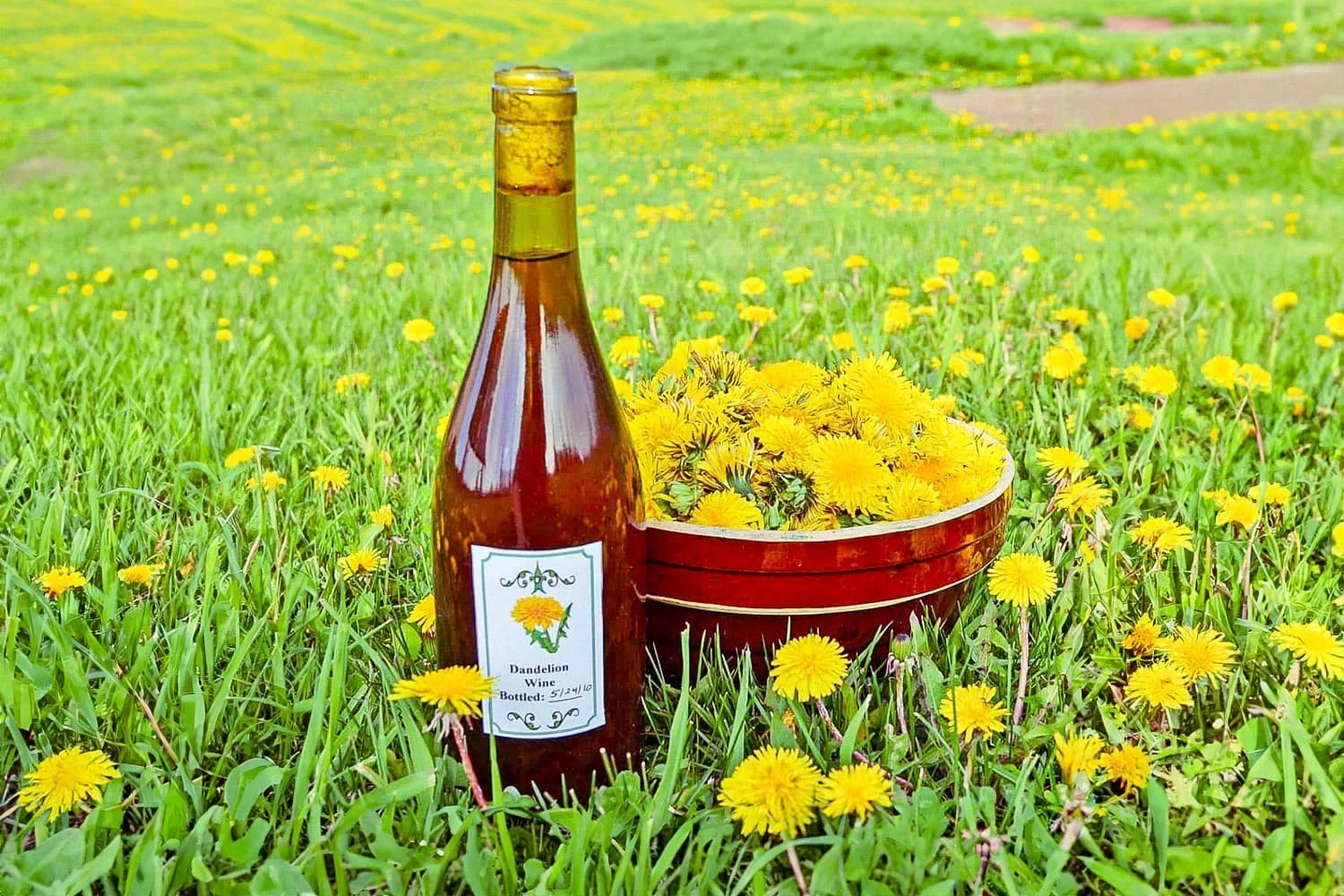
The magic of dandelion wine lies in its surprising complexity. The delicate floral sweetness is balanced by citrus brightness from oranges and lemons, while raisins add depth and body. After aging for several months, you’ll be rewarded with a smooth, honeyed wine that tastes nothing like the lawn ornaments it came from. This recipe is perfect for beginners in home winemaking – simple ingredients, straightforward process, spectacular results.
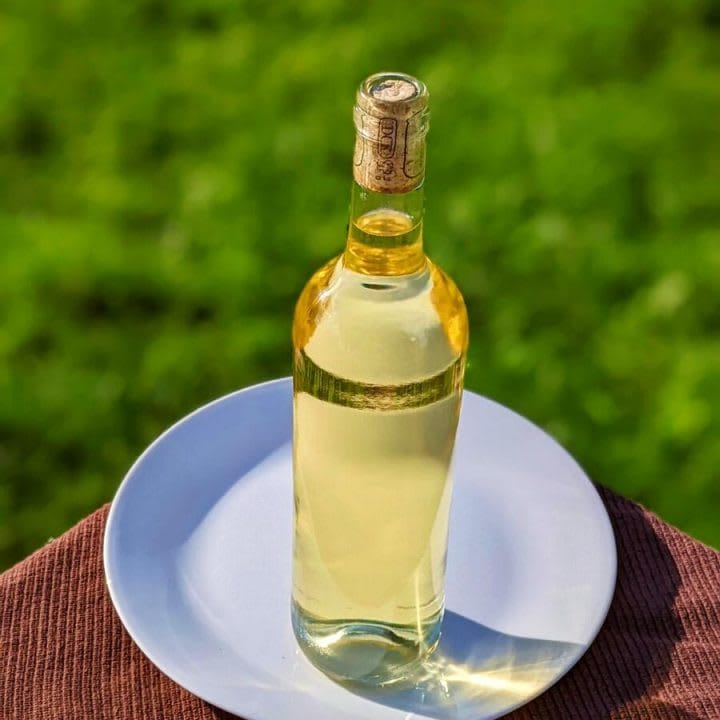
Ingredients
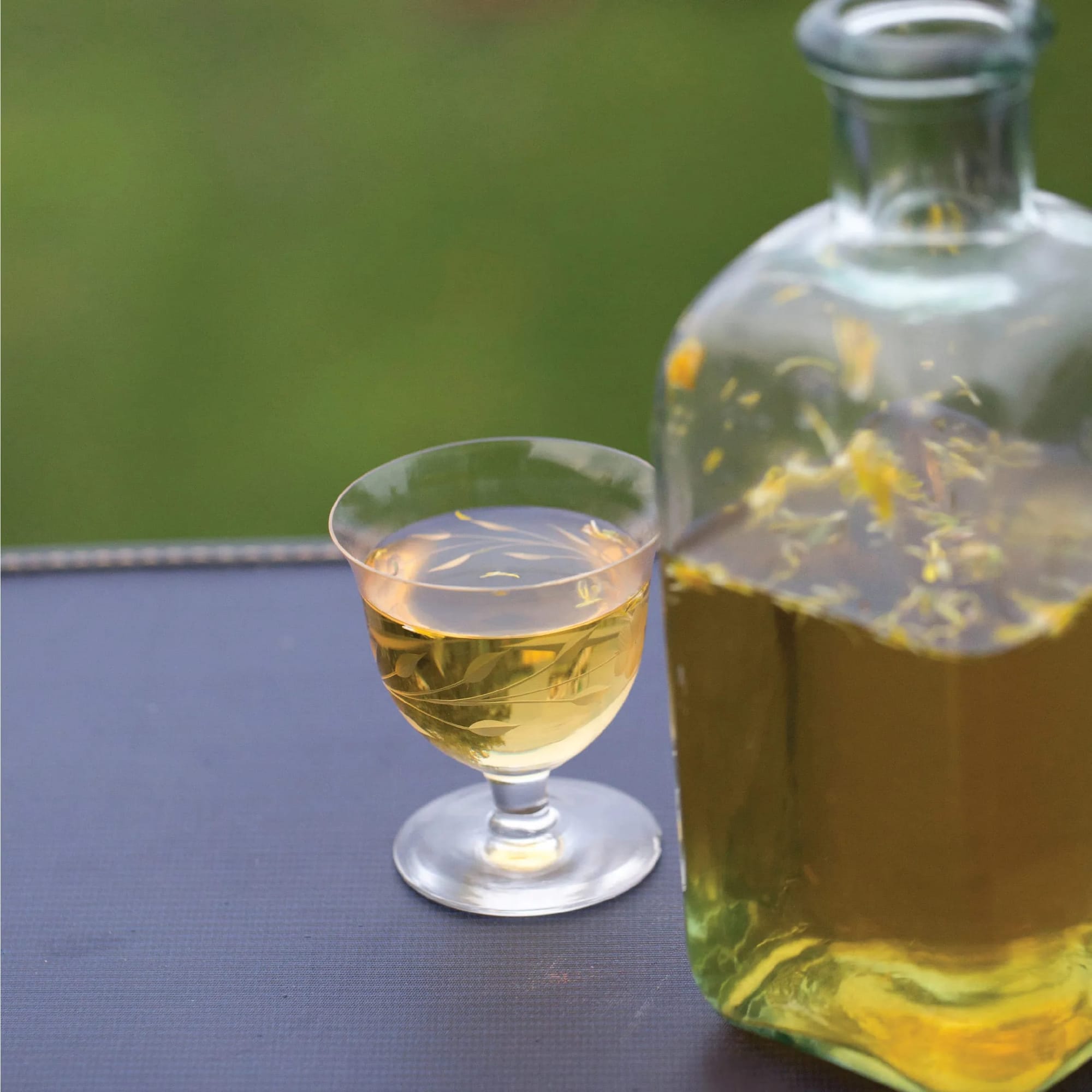
For the Base:
- 3 quarts dandelion petals, loosely packed
- 1 gallon water
For Flavor:
- 2 oranges, with peel, preferably organic
- 1 lemon, with peel, preferably organic
- 3 pounds sugar
- 1 pound raisins, preferably organic
For Fermentation:
- 1 package wine yeast
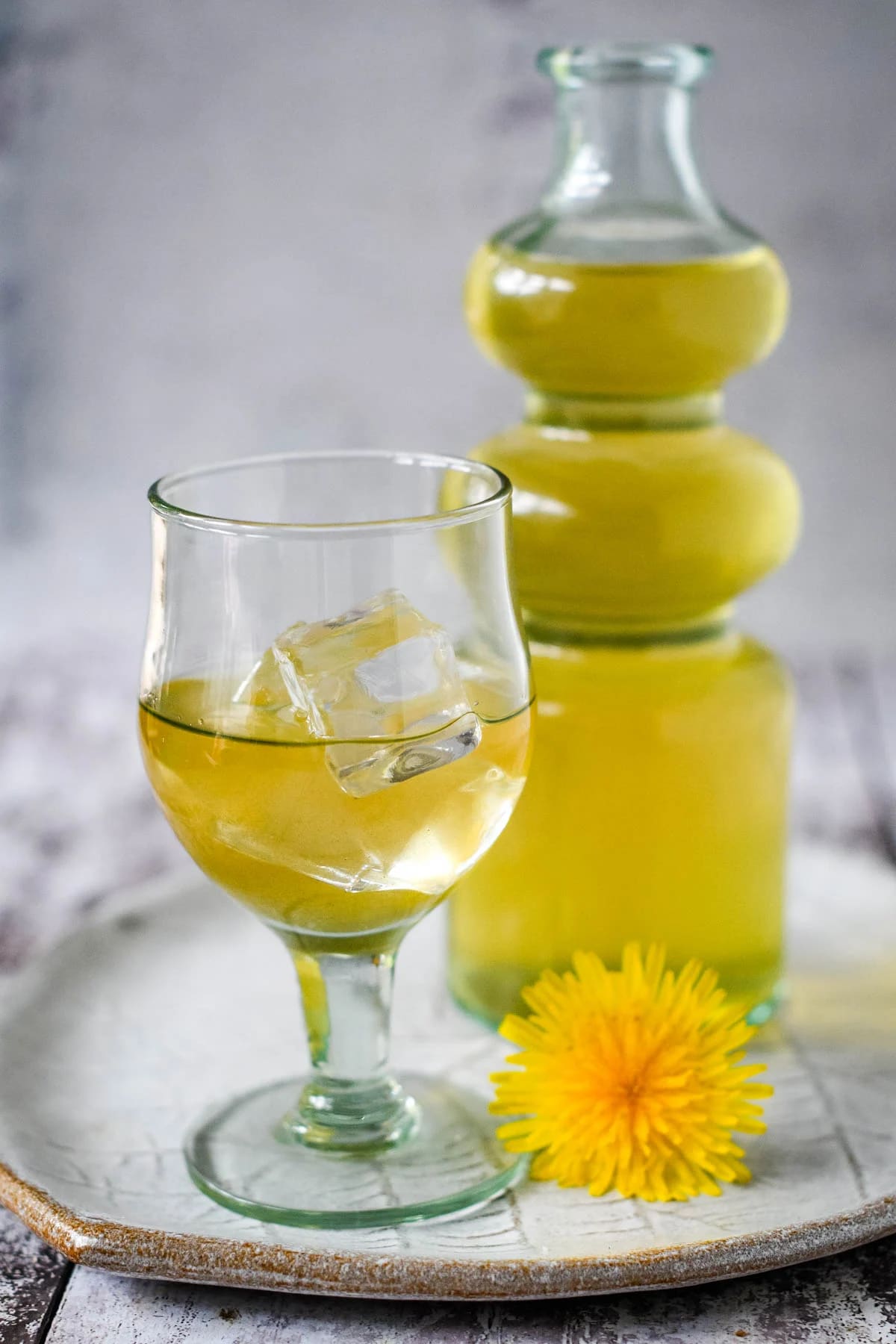
Steps
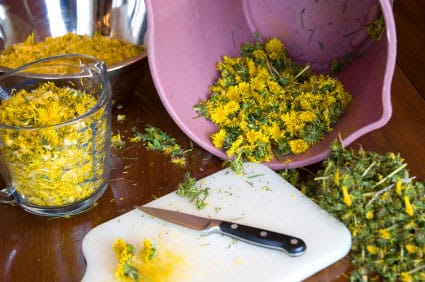
- Harvest the dandelions when they are fully open on a sunny day. Choose flowers from areas not treated with chemicals. Remove any green parts (they add bitterness) and measure out three quarts of petals. The yellow petals should pull away easily from the green base.
- Bring 1 gallon of water to a rolling boil in a large stainless steel pot. Pour the boiling water over the flower petals in a large food-grade pot or crock. Cover with a clean towel to keep dust out and let steep for 3 days. Stir once daily to keep the petals submerged – this ensures maximum flavor extraction while preventing mold growth.
- Prepare the citrus fruits. Using a microplane or fine grater, zest about half of the rind from both oranges and the lemon. Then, using a vegetable peeler, remove the remaining peel in very thin strips. Be careful to minimize the amount of white pith, which can add unwanted bitterness to your wine.
- Finish peeling the citrus fruits completely, removing any remaining pith. Slice them into thin rounds (¼-inch thickness works well). These will add essential acidity and brightness to balance the sweetness.
- Add the lemon and orange zest to the flower-water mixture and bring to a boil over medium-high heat. Once boiling, remove from heat immediately to prevent cooking off the delicate flavors. Strain the mixture through a fine-mesh strainer or cheesecloth, pressing gently to extract all the liquid. Discard the solids.
- Return the strained liquid to the pot and add 3 pounds of sugar, stirring continuously until completely dissolved. The liquid should be clear with no sugar granules visible at the bottom. Allow to cool to room temperature (68-75°F/20-24°C) – adding yeast to hot liquid will kill it.
- Once cooled, add the wine yeast according to package directions, along with the orange and lemon slices and raisins. Transfer everything to a fermentation vessel – either a crock or wide-mouth carboy with airlock. If using a crock, cover with a clean cotton towel secured with a rubber band. Stir daily with a wooden spoon or non-reactive stir stick to aerate the mixture and promote healthy fermentation.
- Monitor the fermentation process. When the primary fermentation stops bubbling (typically 1-2 weeks), it’s almost done. You’ll notice significantly reduced bubbling activity and the fruit may begin to sink. Strain the liquid through several layers of cheesecloth or a flour sack towel into a clean container, squeezing gently to extract all the liquid.
- Bottling Option 1: Transfer the strained young wine directly to clean, sanitized bottles. Slip a deflated balloon over the top of each bottle to monitor for continued fermentation. When the balloon remains deflated for 24 hours, fermentation is complete. Cork the bottles and store in a cool, dark place for at least 6 months before drinking. The wine improves significantly with age.
- Bottling Option 2: For clearer wine, transfer the strained wine into a gallon carboy fitted with an airlock. Allow to ferment in the carboy for 2-3 months, during which sediment will settle to the bottom. Then “rack” (siphon) the clarified wine into bottles, being careful not to disturb the sediment.
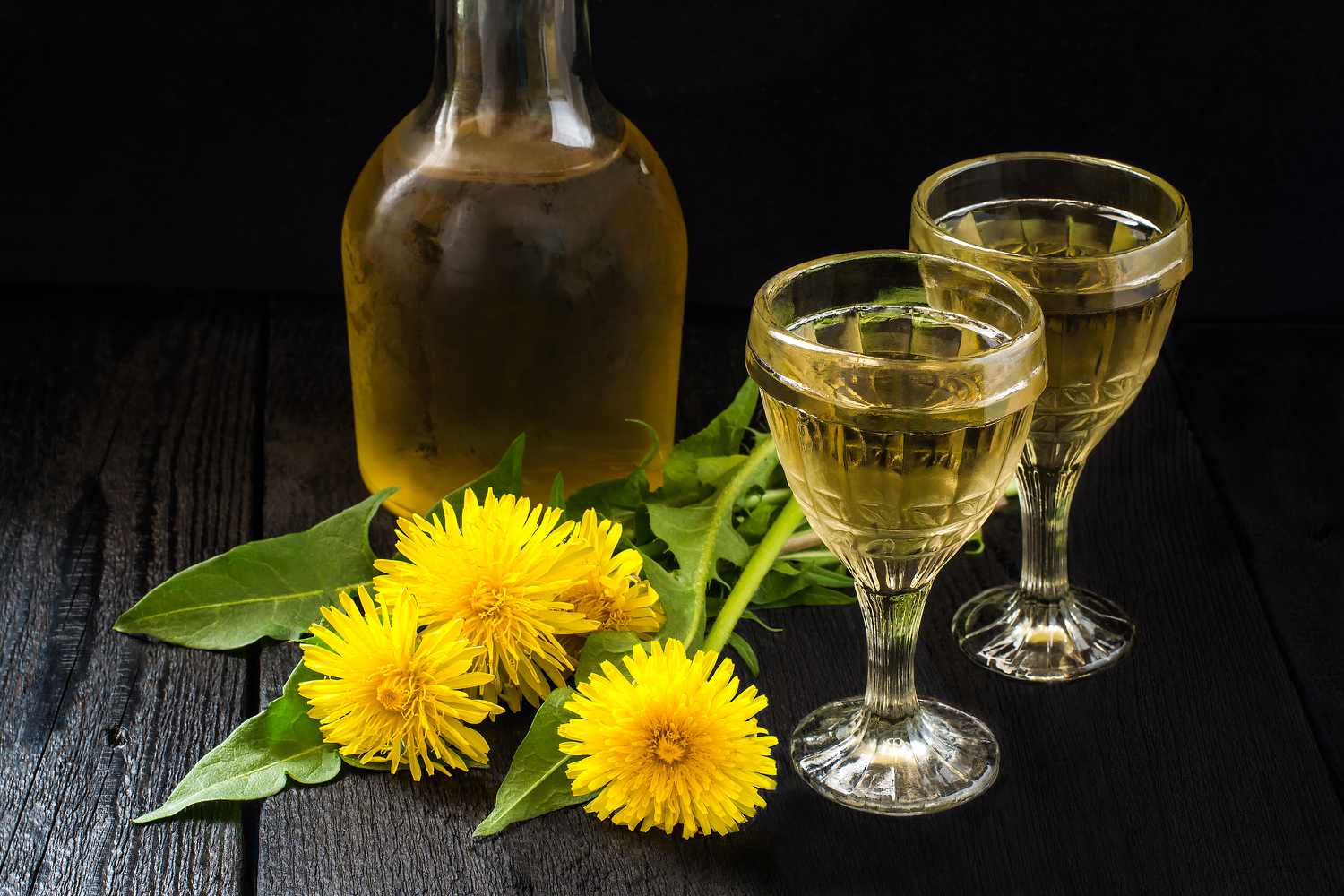
Smart Swaps
- Honey instead of sugar (use 2¼ pounds instead of 3 pounds) for a more complex mead-like flavor
- White grape juice concentrate (1 can) can replace raisins for body without the small particles
- Champagne yeast instead of wine yeast for a drier, more effervescent final product
Make It Diabetes-Friendly
- Replace sugar with 1½ cups liquid stevia plus ½ cup erythritol to maintain body while reducing carbs by approximately 85%
- Use ¾ pound raisins instead of 1 pound to reduce natural sugar content
- Extend fermentation time by 1 week to allow yeast to consume more of the natural sugars
- Limit serving size to 2 oz (approximately 4-5g carbs) compared to standard 5 oz wine serving (12-15g carbs)
- Pair with high-protein, low-carb foods to minimize blood sugar impact
Pro Tips
- Pick dandelions away from roads and areas treated with chemicals
- Temperature control is crucial – ideal fermentation happens between 68-75°F (20-24°C)
- Sanitize all equipment with brewing sanitizer to prevent contamination
- The longer you age this wine, the better it gets – try saving a bottle for 1-2 years
- Label your bottles with the date and ingredients – you’ll want to remember your best batches!